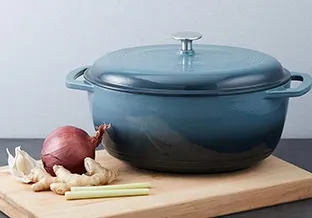
cast iron fried egg
The Art of Cooking Cast Iron Fried Eggs
Fried eggs are a breakfast staple that can be enjoyed any time of day. While many people may opt for non-stick pans for cooking eggs, using a cast iron skillet can elevate this humble dish to new heights. Cast iron not only provides excellent heat retention but also imparts a unique flavor that enhances the overall experience. This article will explore the benefits of using a cast iron skillet for frying eggs, as well as tips for achieving the perfectly cooked fried egg.
The Benefits of Cast Iron Cookware
Cast iron cookware has been cherished for generations due to its durability, versatility, and natural non-stick properties when properly seasoned. Unlike non-stick pans, cast iron skillets can withstand high temperatures and are perfect for achieving a crispy edge on fried eggs. The high heat retention allows the eggs to cook evenly, ensuring that both the whites and yolks reach that perfect doneness.
Another advantage of using cast iron is its ability to go from stovetop to oven, providing versatility in cooking methods. This feature can be particularly useful if you enjoy experimenting with different types of eggs, whether it’s a delicious sunny-side-up, over-easy, or a baked egg dish cooked directly in the skillet.
Preparing Your Cast Iron Skillet
Before you dive into frying eggs, it’s essential to ensure your cast iron skillet is well-seasoned. A well-seasoned skillet creates a natural non-stick surface and prevents your eggs from sticking. To season your skillet, clean it with hot water and a stiff brush, then dry it thoroughly. Next, apply a thin layer of vegetable oil or melted shortening to the entire surface of the skillet, including the handle. Place it upside down in the oven at 375°F (190°C) for about an hour, allowing the oil to bond with the cast iron. Repeat this process as needed to maintain the seasoning.
cast iron fried egg

Cooking the Perfect Fried Egg
Once your skillet is prepped, it’s time to fry some eggs. Start by preheating your cast iron skillet over medium heat. Add a generous amount of oil or butter to the pan; both options can provide a rich flavor, but butter will impart a delightful nuttiness. Allow the fat to heat up until it shimmers, indicating it's hot enough to cook the eggs.
Crack the eggs gently into the skillet, taking care not to break the yolks unless you prefer them scrambled. If you’re cooking multiple eggs, it’s best to space them out to allow even cooking. Once the eggs are in the skillet, you can choose to cover the pan with a lid. This traps steam and cooks the tops of the eggs, ensuring the whites are set while the yolks remain runny, if desired.
For sunny-side-up eggs, patiently allow the eggs to cook without flipping until the whites are fully set but the yolks are still soft. If you prefer over-easy eggs, gently flip them once the whites are set, allowing them to cook for another minute or so on the other side.
Serving and Enjoying Your Fried Eggs
Once your fried eggs are ready, carefully slide them onto a plate using a spatula. Cast iron skillets can retain heat well, so be cautious while serving. You can season the eggs with salt and pepper to taste or add toppings like fresh herbs, grated cheese, or even a dollop of salsa for extra flavor.
In conclusion, cooking fried eggs in a cast iron skillet can turn a simple breakfast into a delicious culinary experience. Once you master the technique, you’ll appreciate the unique flavor and texture that only a cast iron skillet can provide. So, dust off that old skillet, and enjoy the wonderful world of cast iron-fried eggs!
-
Season Cast Iron Perfectly with GPT-4 Turbo TipsNewsAug.01,2025
-
High Quality Cast Iron Cookware - Baixiang County Zhongda MachineryNewsAug.01,2025
-
Premium Cast Iron Pan: Durable & Perfect HeatNewsAug.01,2025
-
High Quality Kitchen Durable Black Round Cast Iron Cookware Pancake Crepe Pan-Baixiang County Zhongda Machinery Manufacturing Co., Ltd.NewsAug.01,2025
-
Cast Iron Cookware - Baixiang County Zhongda Machinery | Nonstick, Heat ResistanceNewsAug.01,2025
-
High Quality Kitchen Durable Black Round Cast Iron Cookware - Baixiang County Zhongda Machinery | Non-Stick, Heat Retention, DurableNewsJul.31,2025


